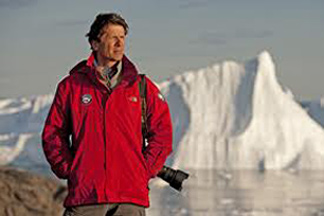Acclaimed photographer James Balog, who has chronicled the natural environment for three decades for National Geographic, discusses his climate change project “The Extreme Ice Survey” Tuesday, April 17 at 7 p.m. in Lawrence University’s Warch Campus Center.
 Combining art and science, Balog creates innovative, dynamic and sometimes shocking interpretations of the world’s fast-changing landscapes, plants and animals. In 2005, Balog founded the Extreme Ice Survey (EIS) to document the impact of global climate change.
Combining art and science, Balog creates innovative, dynamic and sometimes shocking interpretations of the world’s fast-changing landscapes, plants and animals. In 2005, Balog founded the Extreme Ice Survey (EIS) to document the impact of global climate change.
The most wide-ranging, ground-based, photographic study of glaciers ever conducted, the EIS employed 27 time-lapse cameras at remote sites in Greenland, Iceland, Nepal, Alaska, and the Rocky Mountains, recording nearly one million photographs that reveal the extraordinary ongoing retreat of glaciers and ice sheets, and providing visual evidence vital to scientists studying glacier dynamics.
National Geographic showcased this work in the June 2007 and June 2010 issues and the EIS project was the focus of the 2009 NOVA documentary “Extreme Ice.” It also was the subject of the feature-length documentary, “Chasing Ice,” which premiered at the Sundance Film Festival in January of this year.
Balog’s appearance is co-sponsored by Green Roots, the Fox Cities Book Festival, and Renewegy.
About Lawrence University
Founded in 1847, Lawrence University uniquely integrates a college of liberal arts and sciences with a world-class conservatory of music, both devoted exclusively to undergraduate education. Ranked among America’s best colleges by Forbes, it was selected for inclusion in the book “Colleges That Change Lives: 40 Schools That Will Change the Way You Think About College.” Individualized learning, the development of multiple interests and community engagement are central to the Lawrence experience. Lawrence draws its 1,445 students from 44 states and 35 countries. Follow us on Facebook.